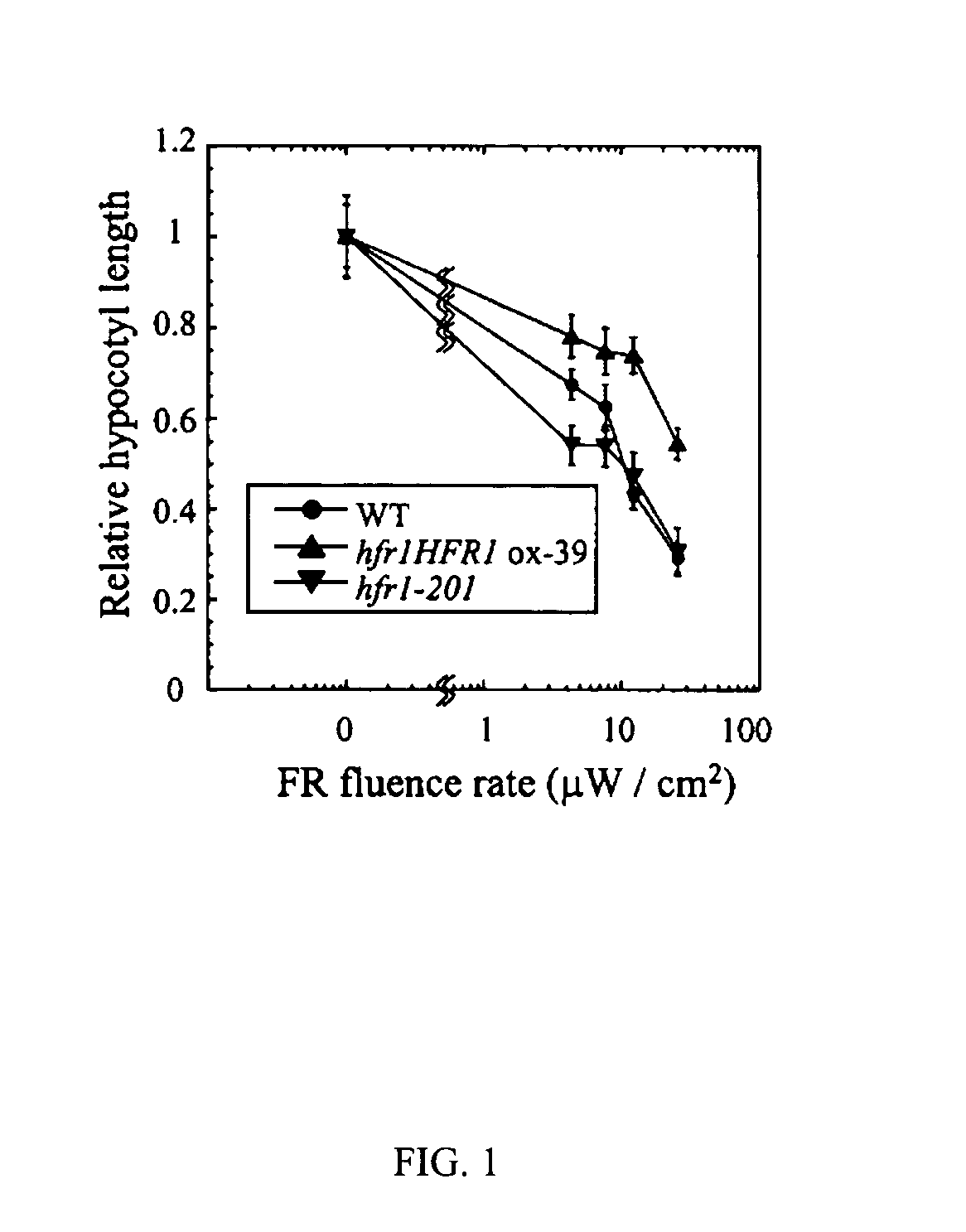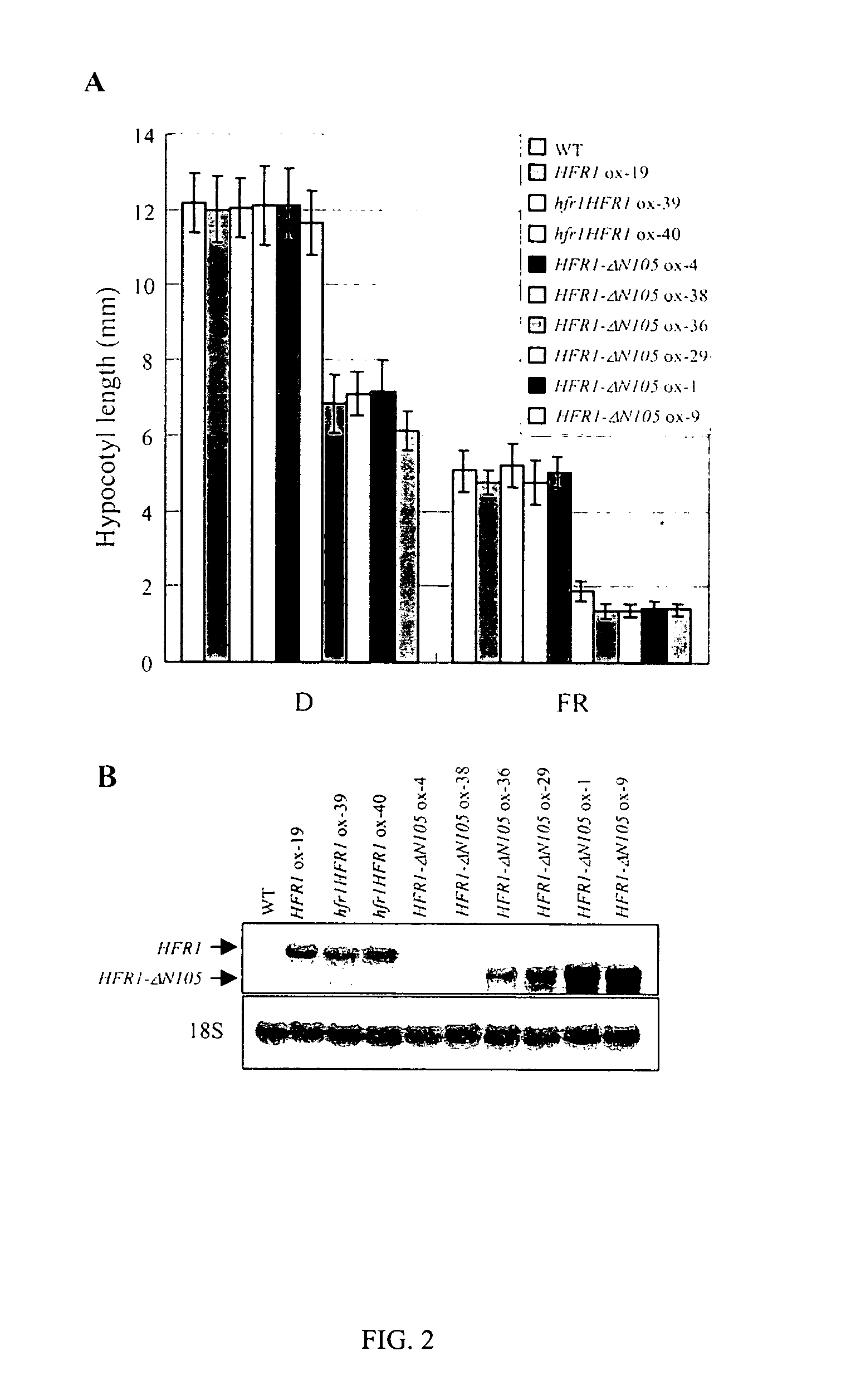Hyperactive light signal related molecule of HFR1-deltaN105 and transgenic plant thereof
a light signal and related molecule technology, applied in biochemistry, organic chemistry, biochemical apparatus and processes, etc., can solve problems such as hypersensitive photoreactions
- Summary
- Abstract
- Description
- Claims
- Application Information
AI Technical Summary
Benefits of technology
Problems solved by technology
Method used
Image
Examples
examples
[0040] Plant Materials and Growth Conditions
[0041] The seeds of wild type (Col), phyB-9 and phyA-211 mutants lines were obtained from Arabidopsis Biological Resources Center (ABRC) (Columbus, Ohio). The fhy3-1 seed was kindly provided by Dr. Garry Whitelam (Leicester University, UK) and the hy5-221 seed was obtained from Dr. Xing-Wang Deng (Yale University, New Haven, Conn.). The fhy1-311 mutant was derived from our mutant screening with EMS-mutagenized seeds and was shown to be a null mutation (unpublished result). All mutants used are from Col background. Light conditions used were same as previously described (Soh et al., 2000). For measurement of hypocotyl lengths, seeds were surface sterilized for 5 min in commercial bleach and rinsed with sterile distilled water at least five times. Seeds were then sown onto MS medium containing 0.8% agar. After incubation at 4° C. for 3 days, the plates were placed in W light for 12 hours at 23° C. to improve germination and then transferred...
PUM
 Login to View More
Login to View More Abstract
Description
Claims
Application Information
 Login to View More
Login to View More - R&D Engineer
- R&D Manager
- IP Professional
- Industry Leading Data Capabilities
- Powerful AI technology
- Patent DNA Extraction
Browse by: Latest US Patents, China's latest patents, Technical Efficacy Thesaurus, Application Domain, Technology Topic, Popular Technical Reports.
© 2024 PatSnap. All rights reserved.Legal|Privacy policy|Modern Slavery Act Transparency Statement|Sitemap|About US| Contact US: help@patsnap.com










